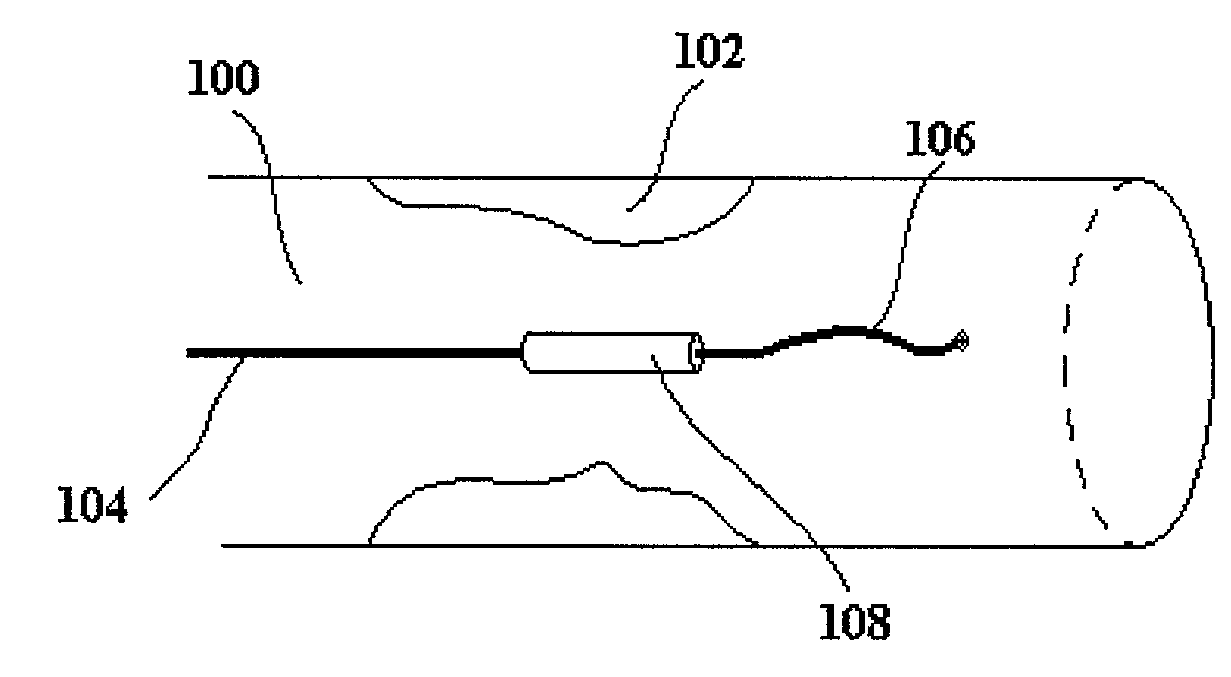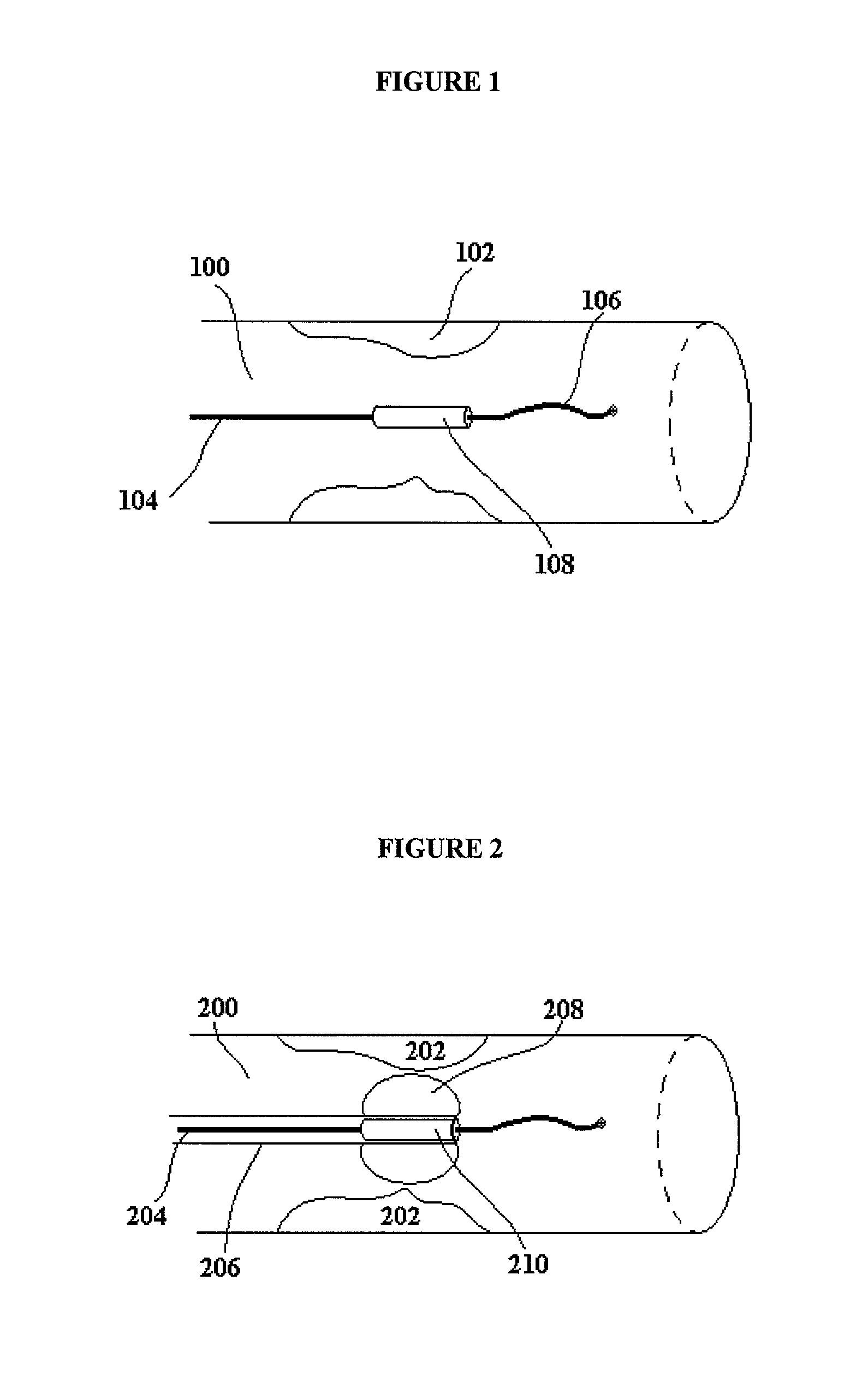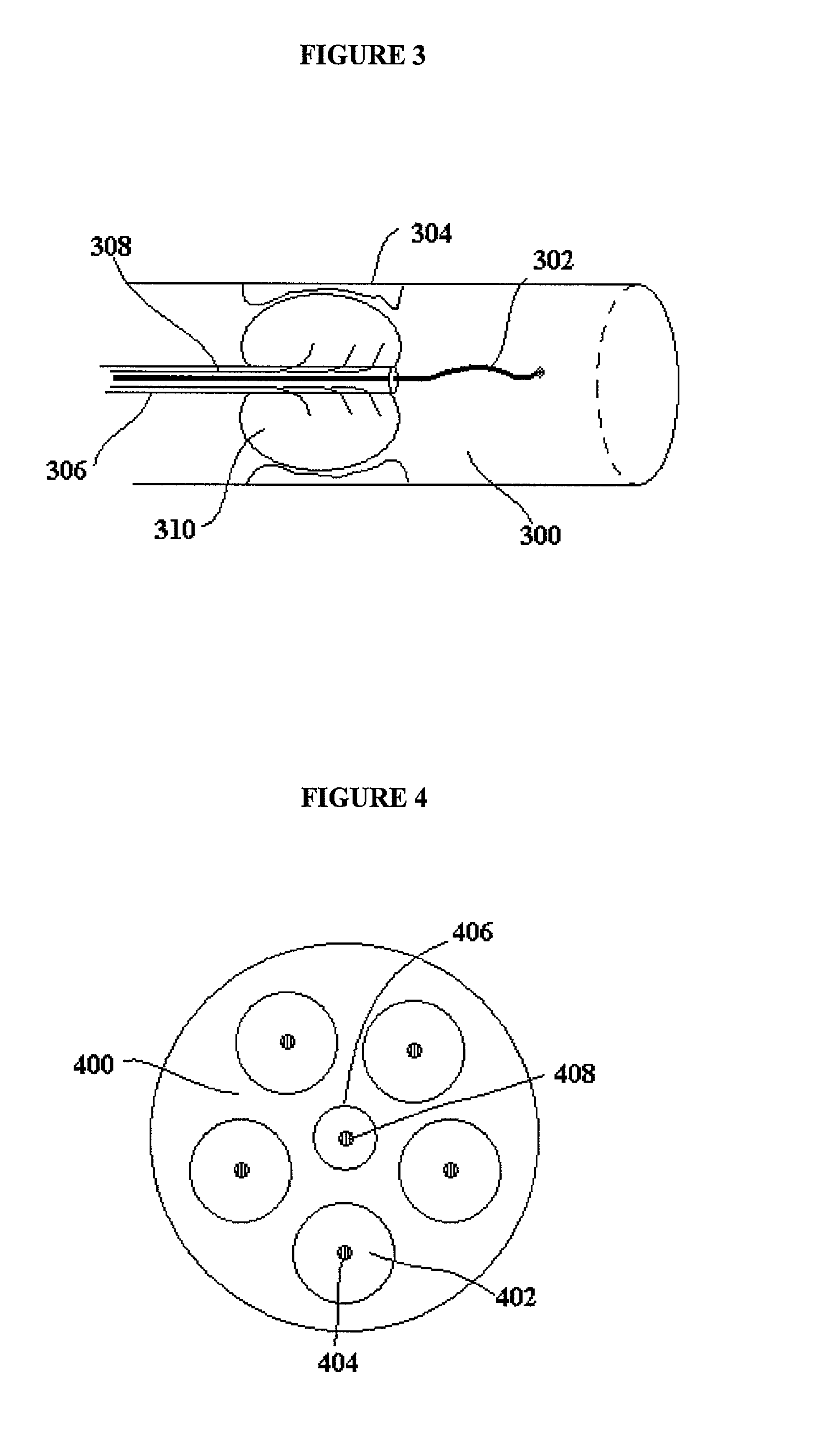Device and method for minimizing restenosis after angioplasty treatment
a technology of angioplasty and minimizing restenosis, which is applied in the field of minimizing restenosis after angioplasty treatment, can solve the problems of affecting the function of organs or tissues, affecting the healing effect of patients, so as to prevent or minimize the occurrence of restenosis
- Summary
- Abstract
- Description
- Claims
- Application Information
AI Technical Summary
Benefits of technology
Problems solved by technology
Method used
Image
Examples
example 2
[0040] FIG. 3 shows a conventional guidewire 302 circumscribed by a catheter in an affected body passageway 300. The guidewire 302 is inserted, the distal tip extending a distance beyond the affected area 304. The balloon catheter 306 is then introduced, circumscribing the guidewire 302. Optical fibers 308 are contained within the tubular structure of catheter 306. The angioplasty balloon is positioned at obstruction 304 and inflated. The balloon 310 displaces plaque 304. A light source connected to the proximal end of optical fibers 308 is activated, transmitting radiation to balloon 310. Irradiation of the plaque 304 prevents cell growth and regeneration, the causes of restenosis. FIG. 4 shows a cross section, looking down the longitudinal axis, of catheter 400. Lumens 402 are circular or otherwise shaped for optimal sizing of the catheter structure 400. Optical fibers 404 are smaller than lumens 402 to allow for movement and prevent cracking or breaking of fibers 404. At least on...
example 3
[0041] In a variation of Example 2 shown in FIG. 5, catheter body 500 is manufactured as a light-conducting polymer. The catheter 500 contains at least one lumen 502 for transmission of gas or liquid to inflate the catheter and to circumscribe the guidewire 504. The processes of angioplasty and irradiation are similar to Example 2. Radiation is transferred through the light-conducting body of the catheter 500 to an angioplasty balloon in sufficiently homogeneous form to transfer to the angioplasty balloon when inflated, irradiating the obstruction in the body passageway. This homogeneous transmission can be accomplished by use of a simple diffuser. The diffuser transmits radiation from the polymer-based catheter body 500 to the balloon or directly to the obstructed area of the body passageway.
PUM
 Login to View More
Login to View More Abstract
Description
Claims
Application Information
 Login to View More
Login to View More - R&D
- Intellectual Property
- Life Sciences
- Materials
- Tech Scout
- Unparalleled Data Quality
- Higher Quality Content
- 60% Fewer Hallucinations
Browse by: Latest US Patents, China's latest patents, Technical Efficacy Thesaurus, Application Domain, Technology Topic, Popular Technical Reports.
© 2025 PatSnap. All rights reserved.Legal|Privacy policy|Modern Slavery Act Transparency Statement|Sitemap|About US| Contact US: help@patsnap.com



